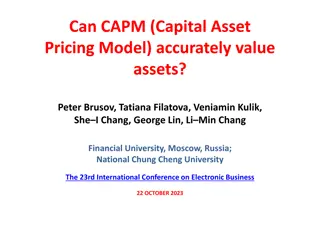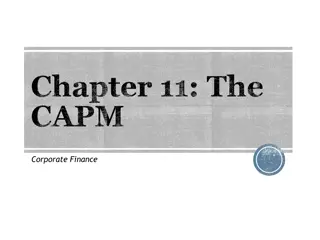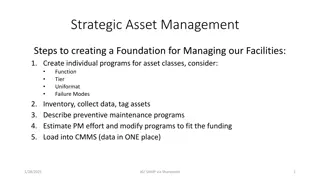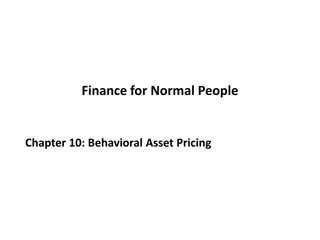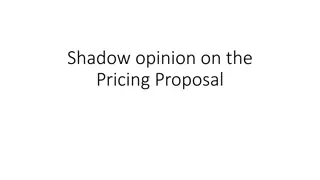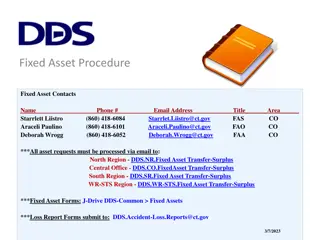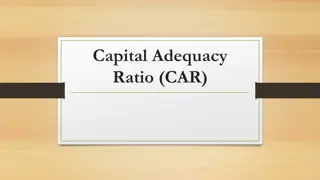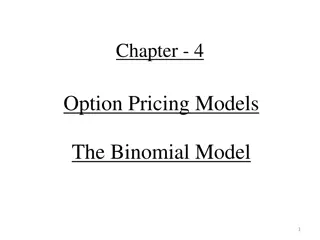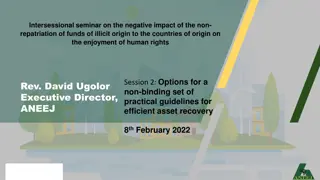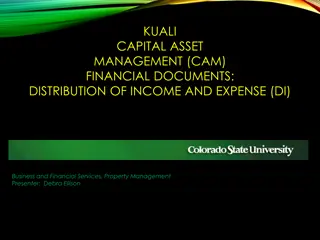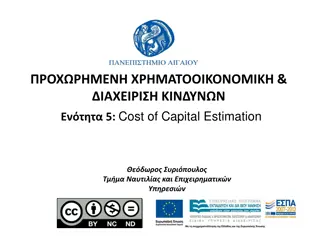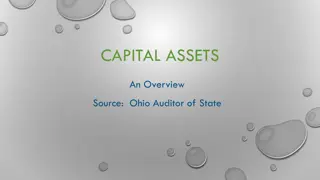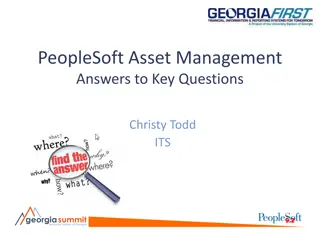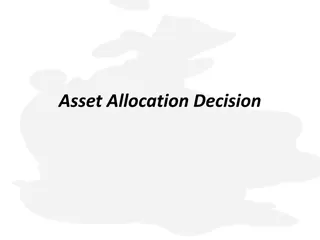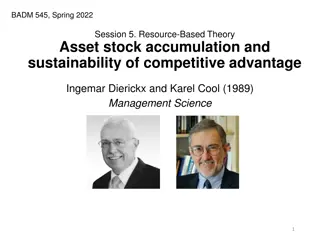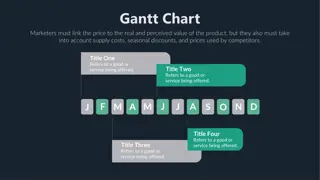Understanding X-CAPM: An Extrapolative Capital Asset Pricing Model
This paper discusses the X-CAPM model proposed by Barberis et al., which addresses the challenges posed by investors with extrapolative expectations. The model analytically solves a heterogeneous agents consumption-based model, simulates it, and matches various moments. It explores how rational investors and price extrapolators differ in their expectations about future stock returns, leading to amplified jumps and mispricing. Special assumptions and settings are detailed to provide a comprehensive understanding of the model.
Download Presentation

Please find below an Image/Link to download the presentation.
The content on the website is provided AS IS for your information and personal use only. It may not be sold, licensed, or shared on other websites without obtaining consent from the author. Download presentation by click this link. If you encounter any issues during the download, it is possible that the publisher has removed the file from their server.
E N D
Presentation Transcript
X-CAPM: An extrapolative capital asset pricing model Barberis et al. (JFE forthcoming) Roy
Motivation Greenwood and Shleifer (2014): investors hold extrapolative expectations Hard to be justified by traditional models This paper: address the survey evidence, hopefully still able to explain some AP moments
What is in the paper? Analytically solve a heterogeneous agents consumption based model Simulate the model Match some moments
How does the model work? Rational investors and price extrapolators differ only in expectations about future stock return Extrapolators cause the jump to be amplified, mispricing created by wrong expectation Can we explain by traditional model? No, because stock price go up implies either risk aversion or perceived risk go down. Rational investors know the decisions of extrapolators, hence do not aggressively counteract the overvaluation. But ultimately low dividends bring the overvalued stock back, and then extrapolators start selling
Special assumptions Dividend level follows an arithmetic Brownian motion Investor preferences (CARA, not CRRA): exponential utility more natural to work with quantities defined in terms of differences rather than ratios, e.g. price changes rather than returns, price-dividend difference rather than price-dividend ratio. Risk free rate, an exogenous constant
Setting Two type of assets: A risk free asset with perfectly elastic supply and constant interest rate r Risky asset with fixed supply Q Dividend: arithmetic Brownian motion Two type of agents: a continuum of rational investors and extrapolators
Setting Extrapolator form beliefs about future price changes on stock market Sentiment (momentum): Assume extrapolator s expectation of the speed of change in stock prices: Price process: no dividends in it Assume extrapolators know sigma_p
Setting Rational investor has correct belief about dividend process and price process. Know how the extrapolators form their beliefs and trade accordingly Both are price takers
Investors problem Extrapolator: Same for rational trader Clearing condition
Eqm vs R stock price Rational: Equilibrium in presence of extrapolators
Eqm vs E Stock price process Extrapolators: Rational investors: Eqm Extrapolators: expected instantaneous price change depends positively on the S_t. Rational: depends on dividends. In equilibrium: depends negatively on S_t.
Eqm vs E sentiment process Extrapolators: Equilibrium: Extrapolators: sentiment follows a random walk if lamda_1 = 1, lamda_0 = 0 In equilibrium: mean-reverting. The higher the beta, the more rapid reverts back to mean
E vs R stock price Rational: Equilibrium: When extrapolators are present, consumption policy depends on S_t. b^e>b^r: extrapolators increase their consumption more due to income effect a^e and a^r are both negative: when sentiment deviates substantially from its long- run mean, both types increase their consumption
Empirical implication Predictive power of D/r P for future price changes Autocorrelation of P-D/r Volatility of price changes and of P-D/r Autocorrelation of price changes Correlation of consumption changes and prices changes Predictive power of surplus consumption Equity premium and Sharpe ratio
Predictive power of D/r P Analogous to Cochrane(2011) regressions, dividend price change can be expressed as. As a matter of accounting, the three regression coefficients must sum to approximately one at long horizons. Price change on the current dividend-price change; Dividend change on the current dividend-price change; future dividend-price change on the current dividend-price change
For a fixed horizon, the predictive power of D/r - P is stronger for low (few rational investors) The predictive power of D/r - P is weaker for low (more persistent)
Predictive power of D/r P Good cash-flow news stock prices , extrapolators expectations , push further current stock price , D/r- P . But the stock market is now overvalued, subsequent price change . Predictability stems on extrapolators, so predictive power is stronger for low Low implies high persistent, takes longer to correct overvaluation, lower predictive power
Volatility of price changes and of P-D/r lower , higher volatility does not matter too much in volatility of price change
Volatility of price changes and of P-D/r A good cash-flow shock, price , extrapolators push stock prices up further. Rational investors counter act this overvaluation, but only mildly: they know that extrapolators will continue to bid. The larger the fraction of extrapolators (low ) in the economy, the more excess volatility there is in price changes. Excess volatility is insensitive to . Surprising? extrapolators beliefs are more varying when is high, higher higher volatility However, precisely because extrapolators change their beliefs more quickly when is high, any mispricing will correct more quickly in this case, so rational traders trade more aggressively against the extrapolators, dampening volatility
Predictive power of surplus consumption Surplus consumption difference predicts subsequent price changes with negative sign this predictive power is strong for low and high
Predictive power of surplus consumption Good cash-flow news -> Extrapolators' expectation -> consume more -> aggregate consumption , the surplus consumption . Since the stock market is overvalued at this point, the subsequent price change The surplus consumption difference predicts future price changes with a negative sign.
Model prediction for ratio based quantities



